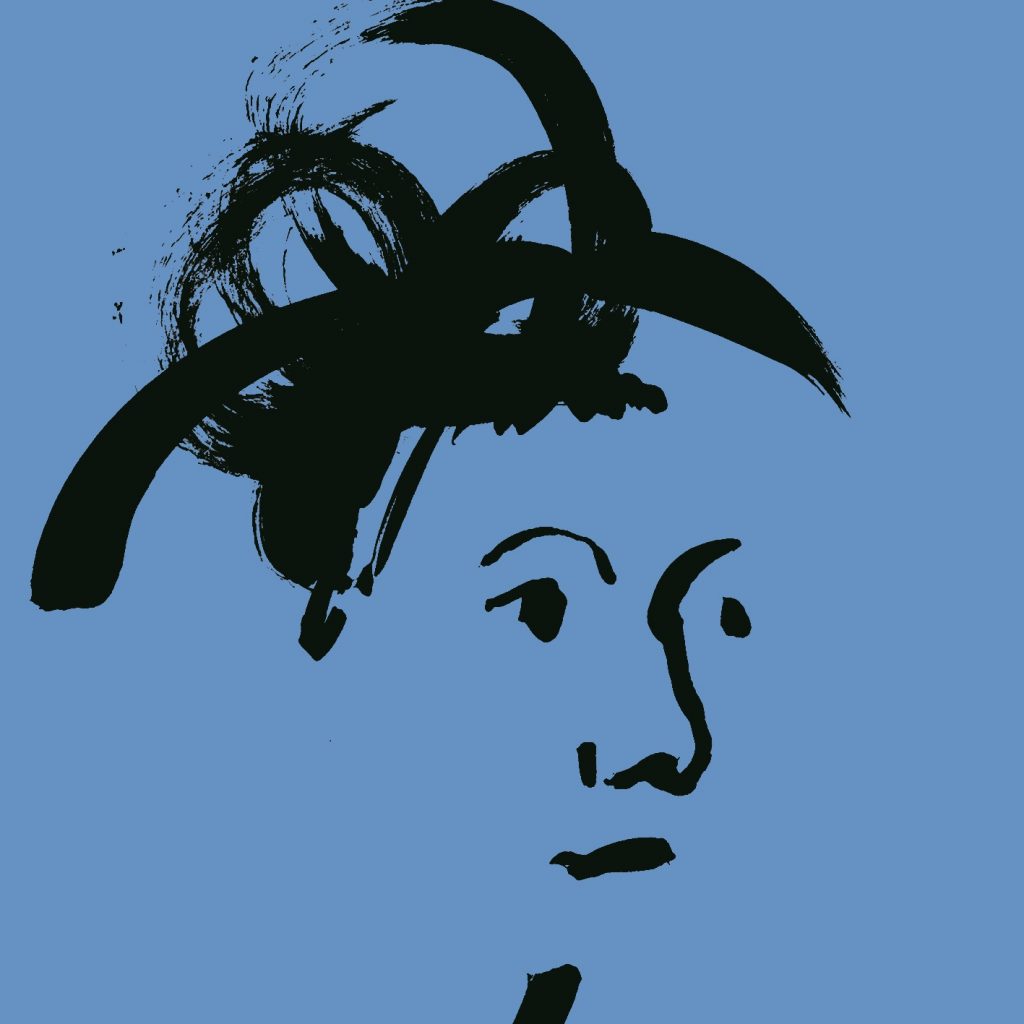
CZESŁAW MIŁOSZ 1911 – 2004
THE CAPTIVE MIND 1953
a collection of 9 essays
„Only the blind may not be capable of seeing the tragic situation that human beings have found themselves in since they decided to take the matters into their own hands and eliminate any chance occurrence.“
In the early 1950s when the Stalinism prevailed in Poland, Czesław Miłosz worked as a diplomat, first in the US, and then in Paris. At that time he was already a distinguished poet in Poland. His work for the totalitarian regime raised growing personal doubts. In 1951 Miłosz resigned from fulfilling his obligations as a diplomat and sought political asylum in France. He was the first major intellectual from the communist countries not only to “desert” but also carry out an in-depth analysis of his situation, which he did in The Captive Mind released two years later. His political and philosophical reflections on the situation of writers entangled in the totalitarian system won wide international acclaim. The publication has given rise to ongoing disputes and debates regarding Miłosz’s approach and attitude towards the topic that continue.
The writer had enough experiences to last several lifetimes. A full witness of the 20th century, Miłosz lived through all major events from World War I through the October Revolution to Poland’s access to the European Union. During his life, the writer lived in several countries on two continents. He explored all literary genres although he considered himself to be first and foremost a poet.
With the publication of The Captive Mind came Miłosz’s recognition as a world-class intellectual and authority on Eastern Europe, which he would explain to western readers in his numerous essays. Readers were intrigued by his unique perspective as a double outsider. Miłosz looked at the West through the lens of a Pole and a catholic, whereas at Poland through the prism of a person born in multicultural Lithuania. That’s where his lifelong aversion to any nationalisms came from. After 1960 the writer settled down in the US. The Nobel Prize in Literature awarded in 1980 strengthened his already established status as an outstanding poet and thinker.
Illustrated by URSZULA PALUSIŃSKA

WISŁAWA SZYMBORSKA 1923 – 2012
NOTHING TWICE 1957
a poem from the collection Calling Out to Yeti
„Contemporary poets are sceptical and suspicious even, or perhaps mostly, about themselves. They are reluctant to publicly admit to being poets as if they were a bit ashamed of it…“
The most frequently quoted poem by Wisława Szymborska. The day when the Nobel Prize Laureate in Literature was announced, it was Nothing Twice that made the first page of newspapers in Poland and worldwide. This poem was also read by the poet during her Nobel Prize Laureate meeting with readers in Stockholm. The critics consider the collection of poetry Calling Out to Yeti, which includes Nothing Twice, as the poet’s proper debut. Although it is the poet’s third collection of poetry, it shows the features typical of her poetry such as simplicity, melody, and the use of paradox as the essential rhetorical figure. Szymborska was a fan of jazz and her poetry inspired jazz musicians, including, Stańko and Komeda. The song version of Nothing Twice as performed by Łucja Prus and composed by Andrzej Mundkowski gained great popularity. On the day of Szymborska’s funeral this melody was performed from the tower of St. Mary’s Church in Kraków instead of the traditional trumpet call. The poem was also performed by Kora and Maanam.
Szymborska made her debut as a poet in 1945. Initially, she was a supporter of social realism, which she later attributed to the naivety of youth. She married a poet, Adam Włodek, whom she divorced 6 years later, and later was in a long relationship with writer Kornel Filipowicz.
The poet published ‚only‘ 350 poems and when asked why so few, she would answer: I’ve got a paper bin at home. In the 1996 Nobel Prize award ceremony speech she was praised for “poetry that with ironic precision allows the historical and biological context to come to light in fragments of human reality.” The poet addressed important issues using a simple and reader-friendly language. Her poetry has been translated to 42 languages, and her collections of poetry were bestsellers even in countries where poetry is not commonly read. She hated media hype. The popularity brought by the Nobel Prize was so difficult for her to handle that she humorously divided her life into before and after “the Stockholm tragedy.”
Illustrated by URSZULA PALUSIŃSKA

STANISŁAW LEM 1921 – 2006
SOLARIS 1961
novel
„We don’t want to conquer the universe, we simply want to stretch the Earth to the limits of the universe. We are civil and chivalrous; we don’t want to conquer other races; we simple want to bequeath our values to them and take over their heritage in exchange.“
Stanisław Lem wrote Solaris in June 1959 in the renowned artist residency house, Astoria, in Zakopane. As the writer put it himself, the novel flowed out of him. He couldn’t tell himself where the story was going. The novel was adapted to the big screen three times. Lem wasn’t particularly fond of any film version. Lem did not approve of the changes made by Tarkowski, or Soderbergh’s Hollywood production starring Clooney. The only film based on his writings that the writer enjoyed was Przekładaniec (literally Layer Cake) directed by Andrzej Wajda. The author wrote the screenplay himself.
Lem spent his childhood and teenage years in Lviv. His father was a respected laryngologist. Even though his parents were of Jewish origins, Lem was brought up as a Catholic. He declared himself to be an atheist. With the help of falsified documents, the Lem family managed to avoid the ghetto during the war. Lem worked as a mechanic, which he liked to mention while dealing with skilled workers. The writer was keen on skiing and learning foreign languages: he spoke 6 of them. He was a student at medical school but never sat the final exams.
Considered one of the major 20th century science-fiction writers, Lem is the most translated Polish author. Lem’s talent was first recognized among readers in Germany, where his books were bestsellers. In Russia, Lem enjoyed a celebrity status. His meetings with readers were organized by cosmonauts, writers, and scientists. Lem was critical of American science-fiction literature referring to it as badly-written, thoughtless and commercial rubbish. Nevertheless, his books won considerable acclaim among American critics but never mass popularity among American readers. Philip K. Dick, a legendary American science-fiction writer, questioned the existence of the Polish writer. He believed that LEM was an acronym for a KGB secret unit. In his letter to the FBI, Dick warned against a conspiracy of Marxist writers plotting to take control over the American science-fiction.
Illustrated by URSZULA PALUSIŃSKA

OLGA TOKARCZUK 1962
FLIGHTS 2007
novel
„Why read a novel when you can see a TV series? Why read a biography when you can follow the lives of celebrities online? The world is missing something when we experience it through the glass of a screen.“
The novel is constructed of 116 elements – seemingly non-related but intertwined mini-stories. Some are several-page-long narratives while others just notes composed of a few sentences. They all address the theme of a constant journey. Another motif recurring throughout the book is that of a cabinet of curiosities and the history of conserving the human body. Tokarczuk spent three years on writing Flights while being on a journey herself. The novel is made of texts „written on scraps of paper, in notebooks, on postcards, the palm of a hand, napkins, and the books’ margins.“ Tokarczuk, and the translator of the novel into English, who changed the novel’s title into Flights (the Polish version being Bieguni), won the Man Booker International Prize in 2018. It was the first time for a Polish author to receive this prestigious prize.
Tokarczuk was born in a small town of Sulechów. She earned a degree in psychology, worked as a psychotherapist and a therapist for AA groups that she started. In late 1980s she left for England, where she developed her language skills and did odd jobs, including that of a hotel maid. The writer made her debut with short stories published under a pseudonym. Her first publication was a collection of poetry, so far the only one, and her first novel The Journey of the Book People. The author is recognized for wearing dreadlocks, which she sees as a symbol of blurring boundaries between races and cultures. Tokarczuk lives in the city of Wrocław and her country house in Krajanów near Nowa Ruda.
The author was awarded the Nobel Prize in Literature for 2018. In his award ceremony speech, Per Wästberg, a writer, human rights activist, and member of the Swedish Academy, referred to Tokarczuk as „a bard of global stature“ who does not retreat from the truth, even the most difficult one to accept such as colonialism or antisemitism. Her books revive the hope for Europe without borders. Tokarczuk is known for her literary achievements as well as her progressive views. She has been engaged in social campaigns for the rights of many marginalized social groups including persons with disabilities and sexual minorities. She is a supporter of pro-democratic and environmentally friendly movements.
Illustrated by URSZULA PALUSIŃSKA
